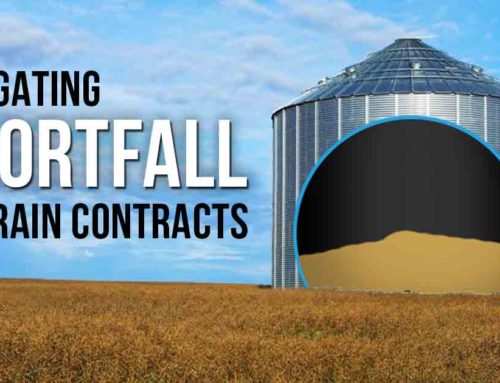Mycotoxins from feed grain can be detrimental to the health of livestock. Whether you are keeping the grain for your own livestock or selling it to another farmer or feedlot, knowing what shape your grain is in is an essential part of your grain marketing plan.
If you are selling your feed barley or wheat to another operation and it is full of mycotoxins, you can bet they won’t be a repeat customer.
If you keep it for your livestock, it will definitely make your herd sick, hurt each animal’s ability to gain weight, and possibly even kill some of them depending on how much they eat.
However, as Dr. Barry Blakley, a Professor of Veterinary Toxicology at the University of Saskatchewan, says, a simple eye test is not going to help determine if there are mycotoxins in the grain as appearances can be deceiving.
“I’ve seen great-looking feed that turned out to be loaded with mycotoxins when we tested it”
Conversely, he says grain that has been rained on repeatedly during harvest and looks horrible in the truck and bin may not have any mycotoxins in it. This is why it is imperative to get it tested.
Blakley also oversees the toxicology department at Prairie Diagnostic Services. He says 40 per cent of their caseload is mycotoxins, calling it an emerging problem in western Canada.
While there are many different types, the two most common are ergot and deoxynivalenol (DON) (Also known as Vomitoxin) on the prairies.“75 per cent of that is ergot, while 20 per cent is DON.”
Ergot
Typically the time to start thinking about what is in your grain, like mycotoxins, is when it is coming off the field. However, to completely understand ergot, you need to go back to when it first emerges during the growing season.
Ergot is created when the fungus invades the plant at the flowering stage, replacing the grain. It looks similar and is similar in size.
The longer the flowering stage, the more likely this will help. It primarily happens in June during warm, moist periods.
Recently, it has been found in wheat, barley, oats, triticale, rye, sedge grass, and bromegrass.
So, how do you find out if you have ergot in your field?
One of the toughest parts in testing for ergot is that it typically grows more on the outer parts of the field and works its way towards the centre.
Blakley says to make sure you take multiple samples from different parts of the field to make sure you get an accurate reading of whether there was ergot.
The best way to protect against ergot is to make sure the ditches around the field are mowed and that you have a good crop rotation.
There is more of a risk of it developing in fields where there has been poor crop rotation.It’s also important to keep a sharp eye on your livestock for symptoms, just in case some contaminated grain ends up being fed.
If the cattle are fed grain with ergot in it, they will show the following symptoms:
Gangrenous Form
Prolonged exposure can result in:
• the animal being depressed.
• a reduction in feed intake and milk production.
• lameness.
• elevated heart rate .
• the animal eventually developing dry gangrene of its extremities.
• In the early stages, the animal will look like it is walking on egg-shells.
Treatment includes:
• Removal from feed
• Euthanasia is recommended in severe cases
Deoxynivalenol (DON)/Vomitoxin
A problem that has prominently been seen in Manitoba and southeast Saskatchewan in recent years is DON.
One way DON is created is when Fusarium head blight (FHB) forms on the head of wheat or barley.
Managing FHB during the growing season includes:
• applying a good fungicide.
• doing post-spray scouting.
• getting it tested.
• storing it separately from grain that does not have FHB.
Again, if DON is in the feed, the symptoms that will show up in the livestock will vary based on the amount of contaminated feed and duration of exposure.
The most common symptoms are:
• feed refusal resulting in weight loss.
• weakness and depression.
• diarrhea and ulcers.
• hemorrhaging.
If the livestock comes down with it, treatment should include:
• removing the animals from the feed.
• treat with antibiotics for secondary infections and fluids for diarrhea.
Mold
Blakley adds that in rare occurrences (One in 100), the dust from moldy grain can cause spores which in turn could causes fungal infections, which is very dangerous.
This can be remedied by misting canola oil on the grain, which can cut down on the dust.
Conclusion
Blakley says testing your feed grain for mycotoxins will significantly cut down on your cattle herd’s chances of getting sick from their feed.
It will also ensure the product you are selling to other livestock operations is top-notch.




